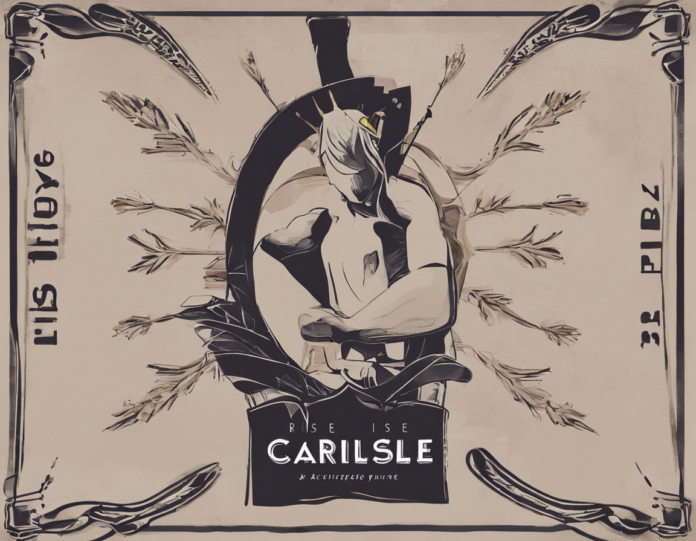The town of Carlisle has a rich and intriguing history that dates back centuries. Situated in northwest England, Carlisle is a historic city with roots tracing back to Roman times. Over the years, it has undergone various transformations and played a significant role in shaping the region’s cultural and political landscape. In this comprehensive article, we will delve into the rise of Carlisle through the centuries, exploring its key milestones, events, and attractions that have contributed to its status as a prominent historical destination.
Roman Origins and Early Settlement
Roman Occupation and the Establishment of the Luguvalium Fort
The history of Carlisle dates back to the Roman occupation of Britain when it was known as Luguvalium. The Romans established a fort in the area around AD 72, strategically located at the intersection of important roads, including the historic Hadrian’s Wall. This fort played a crucial role in securing the northern frontier of the Roman Empire and served as a key military stronghold in the region.
The Influence of Hadrian’s Wall
One of the most iconic features of Carlisle’s Roman history is its close proximity to Hadrian’s Wall, a UNESCO World Heritage Site that stretches across northern England. The wall served as a defensive barrier and marked the northern limits of the Roman Empire, showcasing the military prowess and engineering skills of the Romans. Visitors to Carlisle can explore various sections of Hadrian’s Wall and experience the legacy of this ancient structure firsthand.
Medieval Era and Norman Conquest
Norman Influence and Carlisle Castle
In the medieval era, Carlisle became a strategic stronghold due to its proximity to the Scottish border. Following the Norman Conquest of England in 1066, Carlisle Castle was constructed to defend the town against Scottish raids and invasions. The castle played a pivotal role in various conflicts throughout history and has stood the test of time as one of Carlisle’s most iconic landmarks.
Border Reivers and the Legacy of Conflict
The border region between England and Scotland was a volatile and lawless area known for its Border Reivers, raiders and bandits who engaged in cross-border conflicts for generations. Carlisle and its surrounding areas bore witness to numerous skirmishes and battles, leaving behind a legacy of conflict and rivalry that is still evident in the region’s history and culture.
Industrial Revolution and Modern Developments
Industrial Growth and Economic Prosperity
The Industrial Revolution brought significant changes to Carlisle, transforming it into a thriving center of industry and commerce. The town’s strategic location and access to transportation routes, including the railways, contributed to its economic success during this period. Industries such as textiles, manufacturing, and agriculture flourished, shaping the town’s urban landscape and attracting new residents seeking employment opportunities.
Cultural Heritage and Tourist Attractions
Today, Carlisle boasts a wealth of cultural heritage and attractions that showcase its historical significance. From the medieval architecture of Carlisle Cathedral to the interactive exhibits at Tullie House Museum and Art Gallery, visitors can immerse themselves in the town’s rich past and vibrant present. The Carlisle Guildhall and The Lanes Shopping Centre are popular destinations that offer a mix of history, culture, and modern amenities for residents and tourists alike.
Frequently Asked Questions (FAQs)
1. What is the significance of Carlisle in Roman history?
Carlisle, known as Luguvalium in Roman times, served as a key military fort along Hadrian’s Wall, a strategic frontier of the Roman Empire in Britain.
2. How did Carlisle Castle contribute to the town’s defense?
Carlisle Castle, built following the Norman Conquest, played a crucial role in defending the town against Scottish invasions and border conflicts.
3. What are some notable attractions in Carlisle for tourists?
Popular attractions in Carlisle include Carlisle Cathedral, Tullie House Museum and Art Gallery, Carlisle Guildhall, and The Lanes Shopping Centre.
4. How did the Industrial Revolution impact Carlisle’s development?
The Industrial Revolution brought economic growth and prosperity to Carlisle, establishing it as a center of industry and commerce in northwest England.
5. What is the cultural significance of Carlisle’s border region?
The border region surrounding Carlisle is steeped in a history of conflict and rivalry, shaped by the actions of Border Reivers and centuries of cross-border disputes.
In conclusion, Carlisle’s rise as a historical destination is a testament to its enduring legacy and cultural significance. From its Roman origins to medieval fortifications and industrial developments, the town has evolved over the centuries while preserving its rich heritage for future generations to explore and appreciate. Whether exploring ancient ruins, medieval castles, or vibrant museums, visitors to Carlisle can embark on a captivating journey through time and witness the enduring spirit of this historic town.



